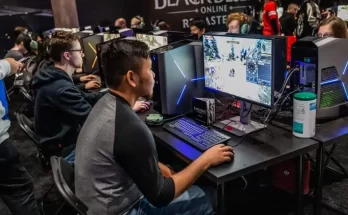In the ever-evolving world of technology, the influence of game design on player motivation cannot be undermined. As more and more people engage in gaming activities across various platforms, understanding the intricacies of game design and its effects on player motivation becomes imperative.
Creating Immersive Experiences
One of the key aspects of game design that significantly impacts player motivation is the creation of immersive experiences. Game designers harness the power of captivating visuals, compelling storylines, and engaging gameplay mechanics to draw players into a virtual world. The synergy of these elements generates an emotional connection between the player and the game, leaving a lasting impact on their motivation to continue playing.
Providing Clear Objectives and Progression
Successful game design involves setting clear objectives and providing visible progression paths for players. Whether it’s completing quests, unlocking new levels, or acquiring in-game rewards, these tangible goals serve as motivators that drive players forward. By designing games with structured objectives, developers tap into the innate human desire for accomplishment and progression, fueling player motivation.
Reward Systems and Gamification
Effective game design utilizes reward systems and gamification techniques to promote player motivation. By offering in-game rewards such as virtual currency, exclusive items, or achievements, players are incentivized to strive for more. Adding gamified elements such as leaderboards, badges, and challenges further increases competitiveness and motivation, as players aim to excel and demonstrate their prowess among peers.
Social Interaction and Community Building
Game design plays a pivotal role in fostering social interaction and community building among players. Multiplayer games, online platforms, and chat features allow individuals to connect, cooperate, and compete with others. These social dynamics contribute to increased motivation as players seek to engage with peers, form alliances, and showcase their skills. Moreover, the sense of belonging to a community cultivates a sense of purpose and dedication, enhancing long-term player motivation.
Personalization and Player Agency
Modern game design acknowledges the importance of personalization and player agency. By allowing players to customize their characters, choose different paths, and make consequential decisions, games cater to individual preferences and provide a sense of autonomy. This empowerment fosters a deep sense of investment and motivation as players feel a unique connection to the game and its outcomes.
Continuous Development and Updates
The impact of game design on player motivation extends beyond the initial release. Game developers often provide continuous updates, additional content, and expansions to maintain player engagement. By listening to player feedback and responding with regular improvements, developers demonstrate their commitment to the gaming community. This ongoing development nurtures player motivation, ensuring that their experience remains fresh and captivating over time.
Conclusion
Game design holds immense power in influencing player motivation. Through the creation of immersive experiences, clear objectives, reward systems, social interactions, personalization, and continuous development, game designers shape players’ intrinsic and extrinsic motivations to keep them engaged and dedicated. Harnessing these elements effectively makes for unforgettable gaming experiences and lasting player motivation.



